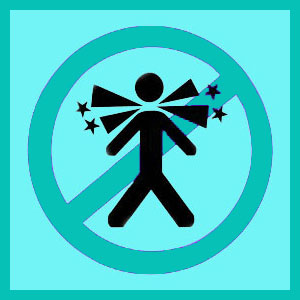
A cervical herniated disc injury is a dreaded event which strikes terror into the heart of every affected patient. Neck injuries are frightening, due to the delicate nature of this vertebral region and the proximity to the upper spinal cord, which is so crucial for providing all the physical abilities we enjoy throughout our bodies. Although neck injuries have a bad reputation as serious events, most resolve without leaving lingering effects or permanent disability.
The incidence of injury to the neck is high, due to pure anatomical design. The neck must move the head through a large and diverse range of motion and also carry the considerable weight of the cranium. When force is applied to the neck in any manner, such as from a fall or act of accidental or purposeful violence, the mass of the head will compound and multiply the force exerted on the cervical spine. This is one of the main reasons why cervical spinal traumas are so prevalent and can be severe.
This discussion focuses on cervical herniated disc injury and its potential effects.
What is a Cervical Herniated Disc Injury?
A herniated disc in the neck can take on many forms. The most common is a bulging disc, which remains intact, but swells to an unusual shape and a state of asymmetry. Ruptured discs occur when the inner nucleus pulposus breaks through the outer annulus fibrosus. If the nucleus spills out of the disc, then the disc is said to be extruded. Finally, if the extruded portion of the disc breaks away and migrates from the disc structure, it is called a sequestered disc.
All of these events can occur from natural spinal degenerative processes, but all can also be enacted by sudden traumatic injury. In many instances, the cause of a herniation is a combination of pre-existing degeneration compounded by the sudden added stress enacted by trauma.
Cervical Disc Injury Explanations
There are so many possible reasons for a disc injury to occur in the neck. In a great number of cases where the disc is not acute and simply discovered as part of routine imaging, there is a high likelihood that injury is not the underlying explanation for the disc condition. Do not forget that the normal and universal degenerative processes will facilitate herniations in the neck and lower back in a large percentage of adults and that these disc issue are usually of no concern.
For traumatic injury which does result in definitive disc injury, the leading causes include any force applied to the neck which will snap the head forward or back. Remember the forces of a neck trauma can be substantial, especially in a whiplash-type scenario where the neck will hyperflex and hyperextend, potentially doubling the actual anatomical damage enacted.
Sporting injuries, significant falls and car accidents are certainly the most commonly cited direct causes of herniated disc injury.
Cervical Herniated Disc Injury Prognosis
It is normal for a person to feel pain from any significant injury. In some cases, the discomfort may be due to trauma to the soft tissues, and not the actual discs, regardless of injury. Remember that the intervertebral discs have no nerve endings themselves and therefore will feel no pain directly.
Sudden onset of spinal stenosis or foraminal stenosis will produce drastic symptoms in some patients who suffer extreme spinal injury. In these cases, the diagnosis is usually obvious and appropriate treatment, including possible surgery, will usually be successful.
Research clearly shows that most back pain and neck pain conditions blamed on a chronic herniated disc are misdiagnosed and the horrific curative statistics of many treatments support this statement completely. However, this does not apply to acute disc injury when obvious neurological impairment results. If the pain does not resolve, despite treatment and time, it may be wise to consider the possibility that the remaining disc abnormality is purely coincidental to the symptoms expressed.
Cervical Herniated Disc Injury Advisory
The cervical spine is the source of more instances of the nocebo effect than any other spinal region. Proximity to the brain, upper spinal cord, wind pipe and carotid artery make neck injuries potentially catastrophic for any patient. Luckily, herniated discs in the neck are more specter than villain and the majority of irregular discs do not cause serious, relentless or treatment-resistant pain.
If you can not defeat diagnosed disc pain in the neck, upper back or upper extremities, think about the very real possibility of an entirely different causation being responsible for the symptoms. Thoracic outlet syndrome is also a possible result of cervical injuries, as is the epidemic perpetuation of suffering by a mindbody pain syndrome.
Herniated Disc > Herniated Disc in the Neck > Cervical Herniated Disc Injury





